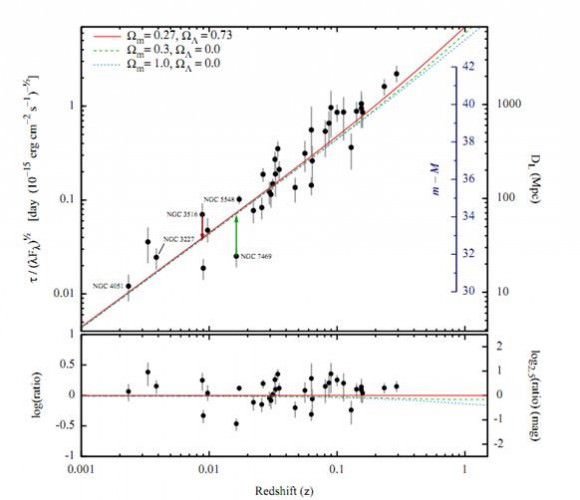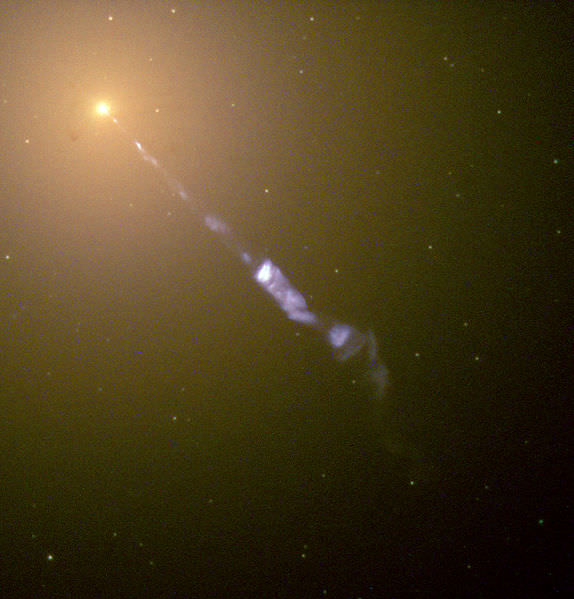[/caption]
Nope. A standard candle isn’t the same red, green, blue, yellow and omni-present pink wax sticks that decorate your every day birthday cake. Until now a standard candle meant a Cepheid variable star – or more recently – a Type 1a supernova. But something new happens almost every day in astronomy, doesn’t it? So start thinking about how an active galactic nucleus could be used to determine distance…
“Accurate distances to celestial objects are key to establishing the age and energy density of the Universe and the nature of dark energy.” says Darach Watson (et al). “A distance measure using active galactic nuclei (AGN) has been sought for more than forty years, as they are extremely luminous and can be observed at very large distances.”
So how is it done? As we know, active galactic nuclei are home to supermassive black holes which unleash powerful radiation. When this radiation ionizes nearby gas clouds, they also emit their own light signature. With both emissions in range of data gathering telescopes, all that’s needed is a way to measure the time it takes between the radiation signal and the ionization point. The process is called reverberation mapping.
“We use the tight relationship between the luminosity of an AGN and the radius of its broad line region established via reverberation mapping to determine the luminosity distances to a sample of 38 AGN.” says Watson. “All reliable distance measures up to now have been limited to moderate redshift — AGN will, for the first time, allow distances to be estimated to z~4, where variations of dark energy and alternate gravity theories can be probed.”

The team hasn’t taken their research “lightly”. It means careful calculations using known factors and repeating the results with other variables thrown into the mix. Even uncertainty…
“The scatter due to observational uncertainty can be reduced significantly. A major advantage held by AGN is that they can be observed repeatedly and the distance to any given object substantially refined.” explains Watson. “The ultimate limit of the accuracy of the method will rely on how the BLR (broad-line emitting region) responds to changes in the luminosity of the central source. The current tight radius-luminosity relationship indicates that the ionisation parameter and the gas density are both close to constant across our sample.”
At the first standard candle we discovered the Universe was expanding. At the second we learned it was accelerating. Now we’re looking back to just 750 million years after the Big Bang. What will tomorrow bring?
Maybe a new kind of cake…
Original Story Source: A New Cosmological Distance Measure Using AGN.

